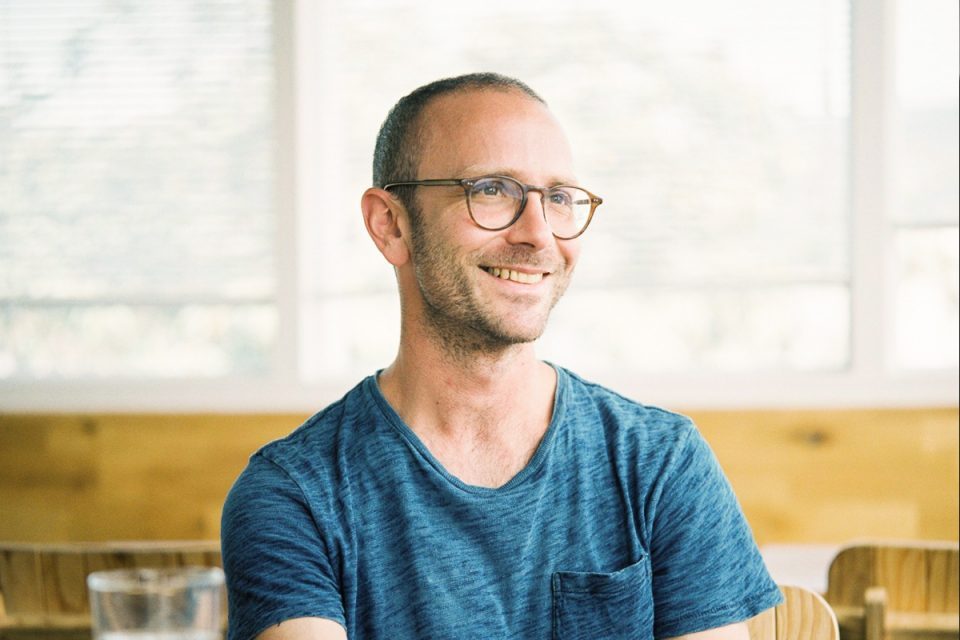Vol.01
Why are you here?
From other countries, to Kamiyama
People often remark that there are a lot of foreigners in Kamiyama, but where did they come from? What is it like for them to be living in this town?
Episode 6
Shinya Ominami, Hideo Sato Born in Kamiyama
May 11, 2020 release
Shinya Ominami and Hideo Sato are two friends, born and raised in Kamiyama. They were also key figures in creating the Kamiyama we know today. They began thirty years ago with the Alice's Homecoming project in 1991, Kamiyama International Association from 1992, Kamiyama Artist in Residence from 1999, NPO Green Valley from 2004 and more. Their efforts have greatly impacted the Kamiyama we know today.
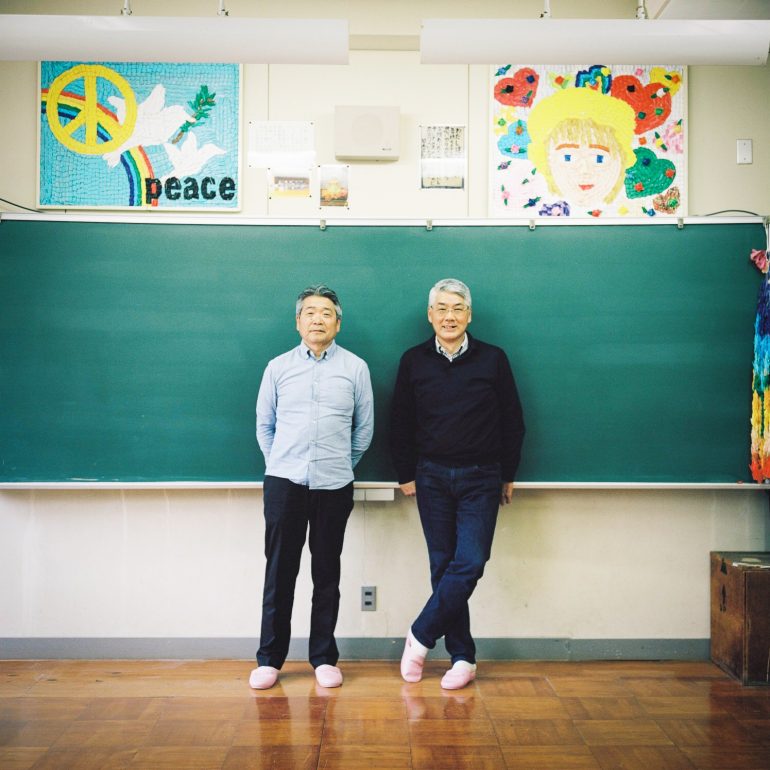
Shinya Ominami
Born in 1953, in Kamiyama, Tokushima. Graduated with an M.A. from Stanford University. After returning to Kamiyama, he ran his civil engineering construction company while working on citizen-led community development projects with his friends.
Hideo Sato
Born in 1953, in Kamiyama, Tokushima. Operates Sato Hardware. He provides and delivers propane gas to every home in Kamiyama, and is a protective force in the daily lives of the people in the community.
What was “Alice’s Homecoming”?
In 1924, the United States introduced an immigration act that banned East Asians from immigrating to the United States, which increased tension between the US and Japan. In response, a doll exchange program was organized to promote friendship, and as a result 12,379 dolls were sent to Japan.
However, when relations worsened during the Pacific War, many of these dolls were discarded, but a female teacher at an elementary school in Kamiyama hid the school’s doll, Alice, in a cupboard, saying, “this doll has done nothing wrong.”
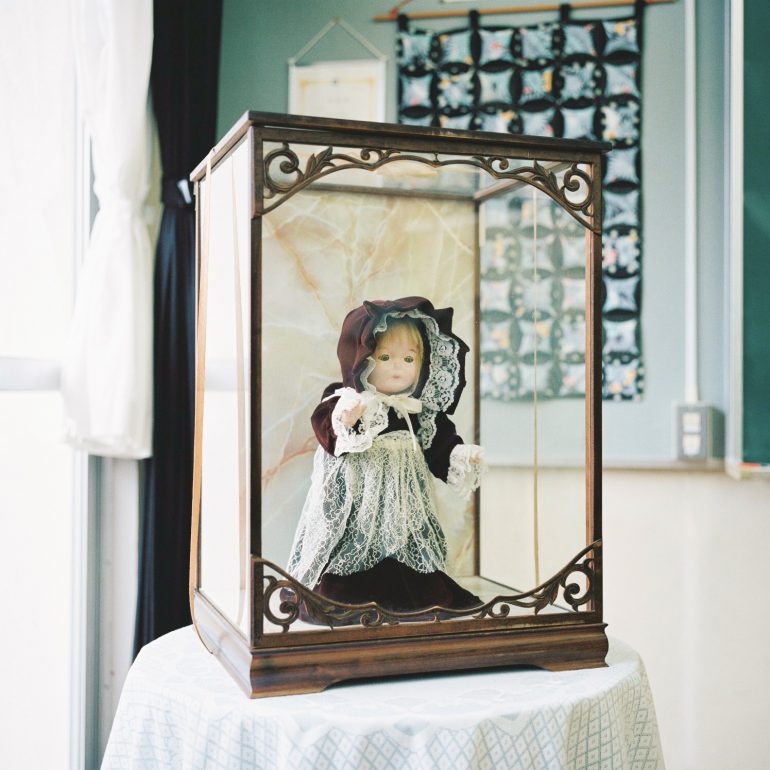
Decades later, Ominami visited the school for a PTA meeting and learned of the existence of the doll. He contacted the city hall of the town the doll was sent from, and found that the sender had already passed away. He subsequently organized a trip to visit the United States with the children of Kamiyama to give the doll a “homecoming.”
This small, successful international exchange experience and the relationships that grew through such travel is often said to have been the positive starting point that resulted in the current situation in Kamiyama.

I spoke to these two friends who have walked this path together and found out what was going on before Alice’s homecoming, and tried to find the headwaters of what this series has focused on, namely the many foreign people in Kamiyama today.
Let’s go have some fun.
So was it Alice, ALTs (Assistant Language Teachers), KAIR, in that order?
OminamiThat’s the general idea.
SatoWe didn’t want to just disband after Alice’s Homecoming, so we made the Kamiyama International Exchange Association. Then we felt like we had to do something, so we invited the ALTs. Found homestays for them. And once that got established, I think the Kamiyama Artist In Residence came next?
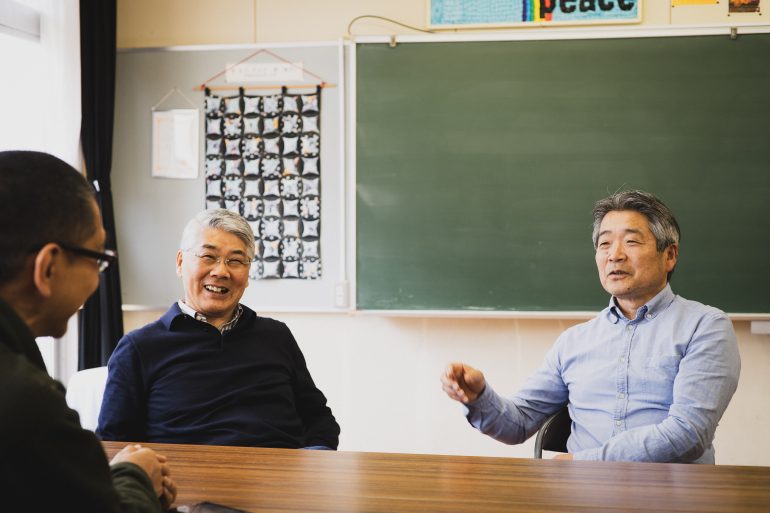
OminamiYeah, but if you go back even further, after I came back from studying in America in 1979, I started that English conversation class.
SatoSo you did. I went to that class too.
OminamiRight? Iwamaru came too.
An English conversation class for adults?
OminamiYeah, that’s right. We didn’t have ALTs yet back then. There was a guy who came from New Zealand who was at Ueno’s place studying how to grow orchids.
SatoMark. He was travelling around the world and he spent two or three months in Kamiyama, I think?
OminamiNo, it was more like a year.
SatoHe taught us the “King’s English.” (laughs)
OminamiAnd I had come back from America, and I thought I’d like to go back overseas every once in a while.
Ha ha.
OminamiI wanted to go back, but I needed a reason. So as an extension of the English conversation class, I said, “Let’s go try it out.” (laughs) So we went to Singapore. And after that, I started going with Sato and the gang to America to golf and such every year. Then around 1988, the University of Music and Performing Arts Vienna came.
SatoAh, yes, they did.
OminamiI think that was the start of Kamiyama’s full-fledged homestay activities.
Was that before the ALTs started coming?
OminamiSatoBefore, before.
OminamiFor some reason, there was a request to take them all in here in Kamiyama. And do a homestay. The students from Vienna came for two nights and three days. I think it was not even twenty people. About twenty?
SatoYeah, I think about that many.
OminamiAnd since they were going to be here, we thought we’d like to get them to sing for the elementary and junior high school students, so they did that for us. That was such a special memory. Such a beautiful sound…
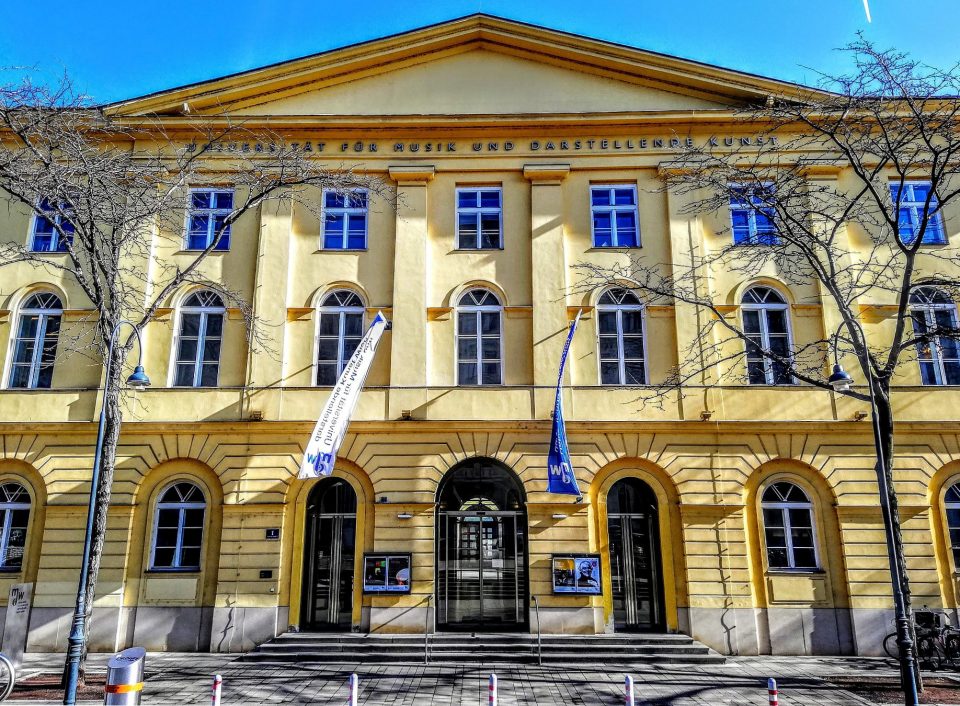
University of Music and Performing Arts Vienna – From Wikipedia
SatoAnd I first met the students at the hot spring, and introduced myself. And I gave them a ride in my car and they said “How long will it take?” and I said “Five minutes.” And then they were like “Whaaaat.” I thought, I must have made a mistake. Then I realized they had asked where we were going. It was the gymnasium but I couldn’t remember how to say that so I said, “Ummm, sports center!” and then they were like, “Oh, the sports center!” And they seemed to relax a bit. I’ll never forget that.
That was one of the first times I really used English. And I just spoke in a mish-mash. Yeah, I remember when they came.
(laughs) How did those people from Vienna end up coming here?
SatoSome organization invited them, and they spent their summer holiday travelling all over Japan.
OminamiThey did travel all over the country.
There was no international relations network back then. How did they end up asking Kamiyama?
SatoI think someone just said, “Nobody else will take them, so could you do it?”
OminamiYeah, that was it.
So it wasn’t something you set up. How many homes participated in the homestay then?
OminamiThere were about two people staying in each house.
SatoWe figured it would be more of a burden with one person. If it’s just one, then it’s one-on-one with the host family. If there are two, they can chat with each other.
OminamiWe found ten families, I guess. And then, the TV and newspaper interviewed Abe, the vice-principal of Hirono Elementary School. I remember he said, “This is the first time in the history of Kamiyama that so many foreign people have come to stay.” Not just one or two, but a whole group of people from overseas. That was the first time.
So there were several families who were willing to have them come to stay.
SatoThere were surprisingly few people who turned us down.
OminamiI think it was because there were a lot of children. They were trying to educate their children and they wanted them to work hard at English. So that played a part, I think. It was hard work to take them in, but they wanted to do it to give that experience to their children.
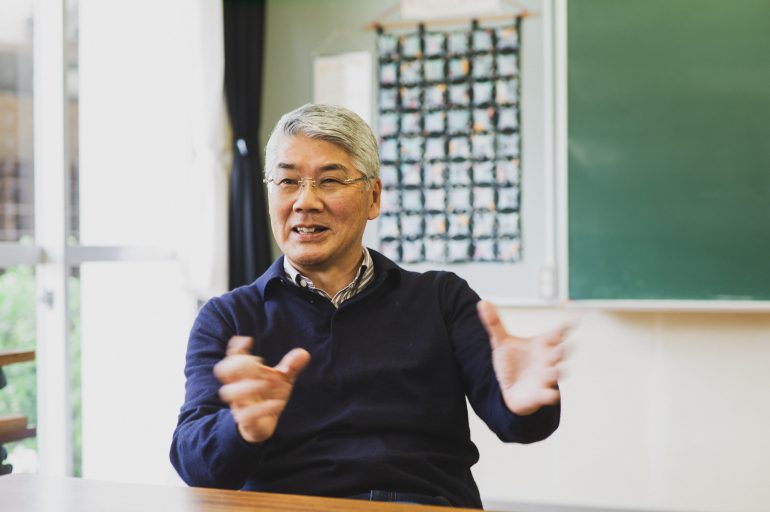
SatoWe had that experience. The concert was a success too. Everyone was really happy. They were so excited. The parents, everyone came.
OminamiYeah.
And before that, you guys had your own English conversation class.
OminamiYeah, we were like, “Let’s go have some fun!”
Ominami, you wanted to come up with a good excuse to go overseas, and then you had these friends with you. I feel like I am starting to get the picture.
Ominami (laughs)
Kamiyama going global. Seeing how things measure up to one’s imagination
Hiromi (Ominami’s older sister) told me a story once about how Ominami once said “Kamiyama will go global” in front of a bunch of people and she thought, “My little brother has gone nuts.” Approximately when was the timing of that story?
OminamiThat was when my niece was in junior high, so a little over 30 years ago. So that would be a little before Alice (1991). It was at a coming-of-age ceremony for junior high students held at the school, and they asked me to talk a bit about my experiences. And that’s what I talked about.
What exactly did you say?
Ominami“I’d like to make a situation where it’s an everyday thing to have foreign kids at the junior high and at the elementary schools.” That sort of thing. Then we wouldn’t have to go to the trouble of leaving. We could stay in Kamiyama and learn English, and get to understand about how things are in other countries. That’s what I talked about.
In front of all the junior high students?
OminamiI was talking big.
SatoI remember that. Then, afterwards, you said “If I say that, then it’s like I’ve committed to it. The responsibility.” And “I’ve talked myself into a corner.”
OminamiI just can’t seem to keep promises I make with myself. I’m too soft on myself. So if I say something in public, everyone remembers. (laughs) And then they push me to take the next step, and they support me. It’s like, “Now that I’ve said it, I’ve got to do it.” It’s my way of stopping myself from backing out on plans.
How was the response from the kids who heard your speech?
OminamiA response? There wasn’t really one. I was just talking about something that wasn’t there.
SatoBut in the end there was a kid who was influenced. Several years later, Shin (Ominami) was invited to the wedding ceremony of someone he didn’t know very well. And we were wondering why, and it turns out it was a kid who heard that speech at the coming-of-age ceremony and had told her parents that she really wanted Ominami to come to the wedding. I guess she was impressed, like, “I want to grow up to be like that guy.” I think that he made an impact.
But on the other hand, I guess the adults were shaken.
SatoOminami (laugh)
You thought about it and eventually decided to go with that for your speech, I guess?
OminamiI suppose so, yeah. I was very fortunate, and I convinced my parents to let me spend two years in the United States. And when I came back here, I tried to think about the best thing I could do for Kamiyama for the time being. And the first thing that came to mind was international exchange.
As an extension of that, I began getting involved in whatever I could. That was the English conversation class, taking my friends with me on trips, and so on. And for me that was how I got started.
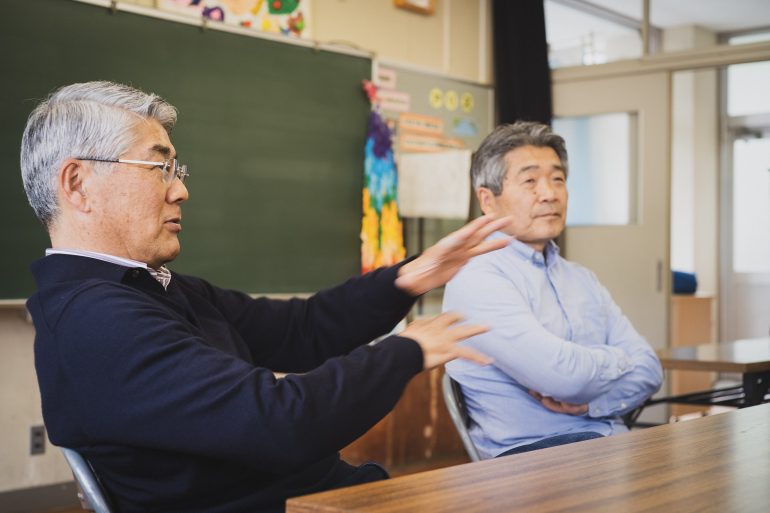
You started with what you could do as an individual.
OminamiYes. It’s something I say often, but, think about “within reach.” What is within reach for me now? When I looked around, I saw people like Sato and Iwamaru who I could reel in and get involved. That was what was within reach for me. That was something I knew I’d be able to affect. If we’re in a situation where we can move together, we can start moving, bit by bit.
I often hear that it all started with Alice, but there were things going on before that.
OminamiNaturally there was a process leading up to it. Look on that wall (the classroom wall), there’s a picture of Iwamaru, who is much younger today (laughs), and us. It was sort of an extension of our PTA duties.
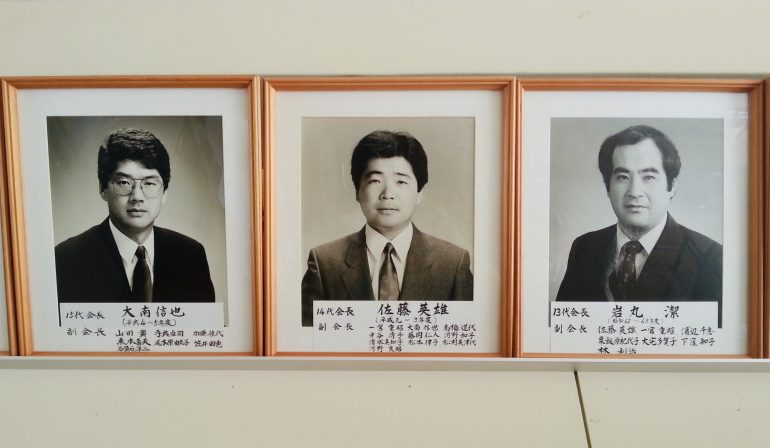
Photo: Yoshiaki Nishimura
SatoKiyoshi Iwamaru became the PTA chairman first, and Shin and I were the vice-chairs. We had many opportunities to get together. The English conversation class too, everyone went, Kiyoshi too.
We were always talking. Once we decided something, we got it done. Usually Shin would start talking about something, and Kiyoshi would say “That sounds like fun!” And then things would just perk along.
You were all in your 30s at that time?
SatoWhen we did Alice, we were about 38, 39. The first time I got taken along to the United States I was about 30, and after that we went every two or three years. It felt like we were prepared to start making things happen.
And you began to have strong feelings about what sort of environment was necessary for the children.
OminamiThat is true. For example, with math or language arts, children in Kamiyama, compared to children in Tokushima City, or even in Tokyo. They don’t really have any handicap when it comes to learning those things, but when it comes to interacting with people from other countries, there were really no opportunities here in Kamiyama. I felt like there was a real meaning behind making that happen here.
Interacting with the outside world and people. Directly encountering different ways of thinking, people who grew up in different cultures. The way it influences your own thinking and ideas can be very meaningful, and I knew that. It would be better for kids to have that experience rather than not at all. If they do it and it doesn’t make a lasting impression, that’s fine too. It’s about creating motivation, and increasing the choices available to a person in life.
People are free to choose for themselves. As adults, all we can do is increase the items on the menu. I think that’s something that is absolutely necessary.
Ever since I was in elementary school, I have loved atlases. When my older sister was in grade five, she had one from Teikoku Shoin or something, and my other sister in junior high had a more sophisticated one. I still didn’t have my own so I’d borrow them from my sisters and just keep them nearby. I’d fall asleep looking at them at night.
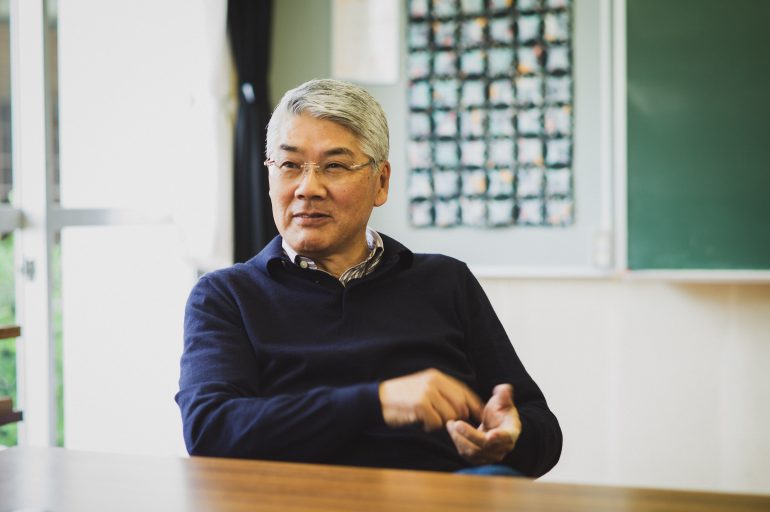
Then I started to imagine, “What is it like at the ends of the earth?” and I wanted to go and see for myself. I wanted to go and be in those places and see how they measured up to my imagination.
At that time, the population of New York was 8 million. That was the number anyway. But if you go and see the real thing, it’s much more three-dimensional, and there are people everywhere… you know what I mean? To go and personally confirm what I had previously only imagined, one thing at a time, that was a real thrill for me.
A result of doing fun things
SatoI think it was about a month ago. I went to Kabacha in Uetsuno (an okonomiyaki restaurant that is open one day a week) to eat, and I saw Amy, who is a chef at Kamaya, and then Victoria came in. Then Yamandu and Dave came in.
Then some IT people came, and people who had moved here from other places. Everyone was chatting together and the common language wasn’t Japanese. It was English. To think this was really happening in Kamiyama… There might have been two locals. It was a magnificent sight. It made me think “Kamiyama has made it this far.” I can’t speak English though so I was just drinking by myself. (laughs)
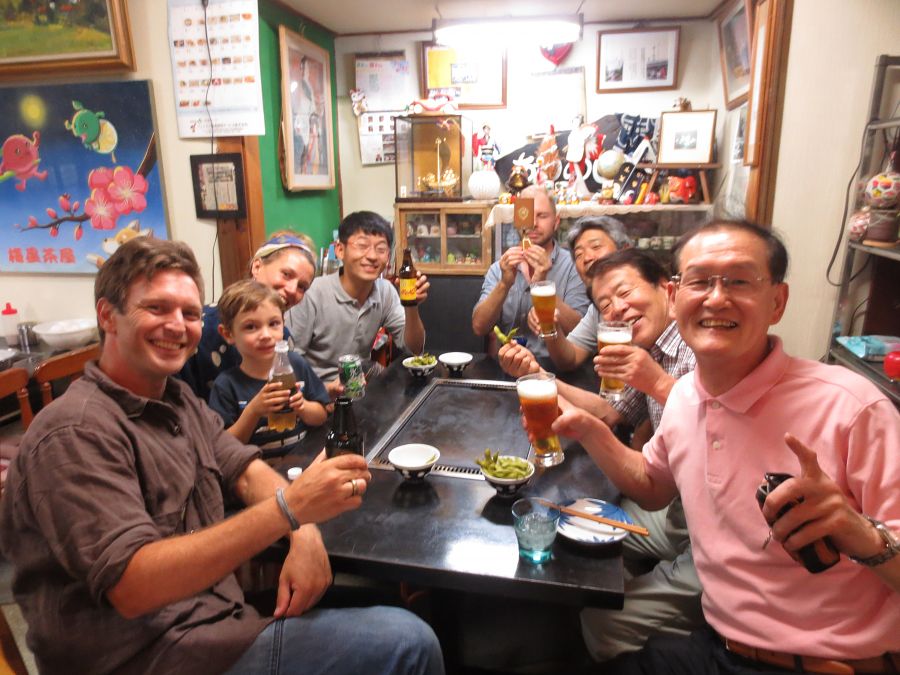
This is a photo from another day at Kabacha, by Nikolai from his diary entry on In Kamiyama about having a farewell party for Nik. June 26, 2015
Starting about ten years ago, we might hold an event and forty people will come, there’ll be maybe five or six locals, and maybe ten Kamiyama Juku*2 students, and maybe ten or twenty young IT people who have moved here, and then there’ll always be about five foreign people, and I always see everyone chatting together, but that night at Kabacha really struck me. I was a little bit moved.
Sounds like fun.
SatoIt is fun, to see the world open up like that. (laughs) Whoever comes, I do like to hear a bit about their country. It’s fun to chat and have a drink or two. When I get drunk, I start to feel gregarious and at the end I always wind up saying “Take me to see your country!” (laughs)
I think the foundation behind the artists who keep coming back again and again has got to be the spirit of hospitality that the people have in Kamiyama. It’s not just the KAIR staff, but the whole town of Kamiyama has changed. I get that sense. Wherever you go, even if they can’t really speak the language, they’re still welcoming. They’re like, “Let’s have some tea, let’s have something to drink.”
To the artists?
SatoTo the artists of course, and also to people like Lawson, Rufus, and the other people who have moved here from other countries. Everyone has gotten really friendly. I think that’s the power behind thirty years of effort. An artist from overseas said that even at the hot spring, old men will approach him speaking only Japanese. Artists have good intuition, so even though he doesn’t understand what they are saying, he just nods appropriately.
Back when the first ALT came, if he walked past the crossroads in front of my place, all the people at the bus stop would stiffen up. Nowadays they have blended into the scenery. (laughs) Even if a foreign person rides by on a bicycle, nobody bats an eyelash. It has just become a part of everyday life here.
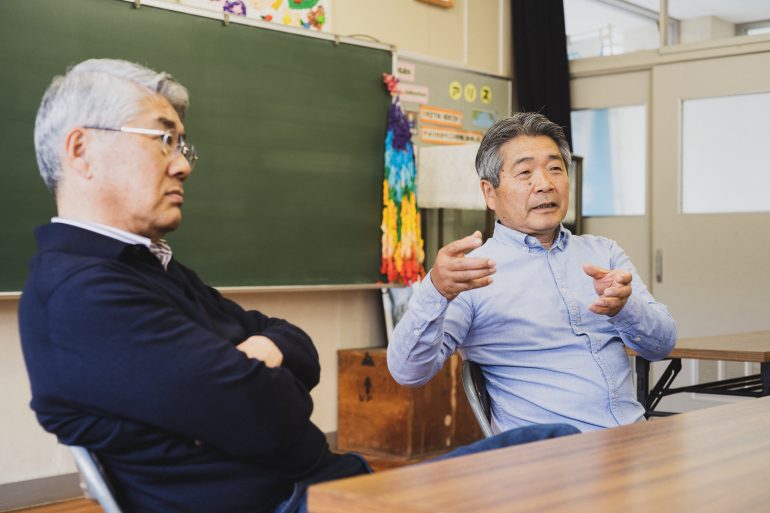
Was there anything you particularly worked at, or tried to focus on in those thirty years?
OminamiI guess I followed a sort of , “let it be how it is” philosophy. There’s a show I always watch on NHK BS, called “Somewhere Street.” The NHK reporting team goes to cities and rural places around the world, and spend a whole day just walking and talking to the locals. About six months ago I was watching one about Palermo, Italy, and there was a space in the town.
During the day it’s a tailor’s shop, but at night they open it up, and every evening the regular people from around town come together and play on musical instruments. There were some people who heard about the place and showed up. “I’ve come from Israel” and “I’m from Russia.” Everyone sitting together having fun.
And then, the reporter said “You are accepting all sorts of people, and it’s really wonderful.” And the tailor said, “It’s a bit much to say we are ‘accepting’ them. When you say we accept lots of people, it sounds like it takes some special effort, but we aren’t like that.” And when asked what was different about what they do, he said, “We just enjoy each other’s differences.” “That’s not the same as ‘accepting’ at all.”
So I guess what is happening in Kamiyama is that the ratio of people who “enjoy each other’s differences” is growing. I wouldn’t say we are in the majority. But the percentage has grown a certain amount compared to before, and so the town’s overall atmosphere has begun to feel more open, I think. It’s pretty important to be able to “enjoy differences.” The act of “enjoying things that you don’t have” is similar, in that if you can learn to look at things from that perspective, the world will suddenly open up to you.
People often get caught up in what they don’t have, and get tied up, get bound by a strange sort of emotional conflict. We don’t have this, we don’t have that. But if you can enjoy what you don’t have, enjoy what isn’t there, I think there’s no better field to be in than that.
When you did your talk at the junior high, you might have said those things, but I don’t suppose you imagined the way Kamiyama is today.
OminamiNot at all.
And I don’t suppose you’d be able to imagine what things will be like, say, thirty years from now.
OminamiI can’t. That’s what I mean. Even if you force yourself to portray something you can’t imagine based on the image you have now, it will never resemble what really happens. You need to gather the things, or rather the people, who will be able to properly create what you can’t imagine.
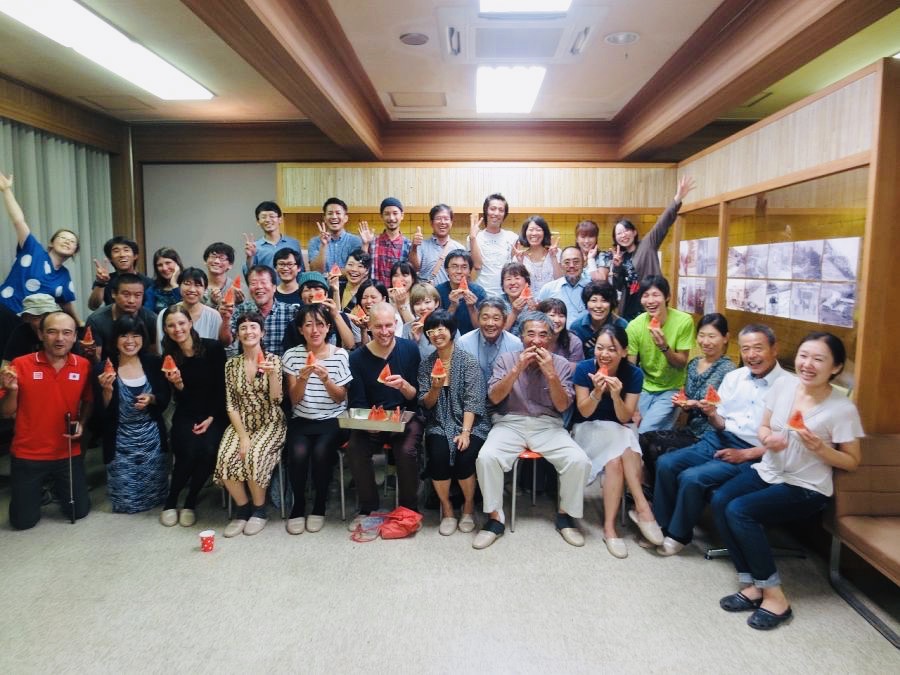
KAIR 2016 Welcome Party Photo: Nikolai
Despite its rural location, has been relatively easy to come and go in Kamiyama these past twenty or thirty years. If we keep making the same conditions and keep on letting new air through, even if we can’t imagine it, we can keep change happening in this town.
I don’t think there’s really any point in saying “I hope it’s like this or that in thirty years.” So I’d rather get people here who can create. If young people who grew up here can think, “Kamiyama is pretty neat” and come back, form a team, and create a new future for Kamiyama, I think that would be pretty close to the ideal.
And they would do that with people from around the world, then.
OminamiI think people will come and go more frequently in the future.
When I first met you fifteen years ago, you said that the number didn’t matter as much as the content of the population. *3
OminamiYeah.
SatoI always say this, but we were just having fun doing things, and the result was a sort of chemical reaction that created a chain of events, and that is how we got the town we have now.
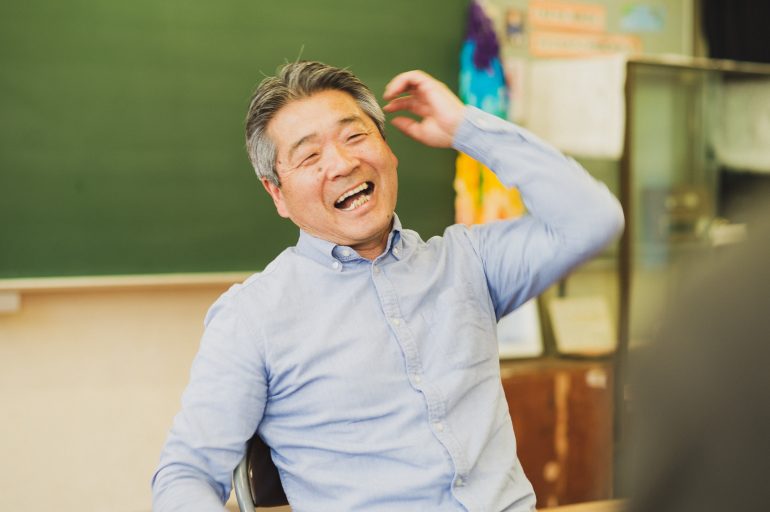
We want to go on a trip. So if we make up an excuse and make it seem like we’re doing something cool, it’s easier for us to go. If you get everyone involved, it’s more fun. That’s what we’re doing. It’s not like we had it all planned out from the start, it just took shape while we were doing it. And got bigger. And once we did one thing, someone would say “Let’s do this next!”
If you do something you think is interesting, people who come from overseas will think it’s interesting too. The residence is like that, and there are talented young people who are interested in that sort of thing, so they come to Kamiyama. And those are the people who are going to be making the next thirty years.
That’s how we’re doing it, so I think the way it is now is just fine. It’s a result of having fun. If we set out with a specific goal, I don’t think it would have happened.
I think the experiences we’ve had that are ordinarily so hard to come by are the result of what we started out with through international exchange.
You can do a lot in one lifetime.
SatoIt’s true. Right now Nik and Yama (Nik Christensen, Yamandu Roos – both KAIR participants) are here from the Netherlands, and they asked me, “Why haven’t you come to see us?” All the artists say that to me, though. I never imagined this time would come.
OminamiYou could travel around the world.
SatoI really could.
OminamiYou could go to all seven continents. (laughs)
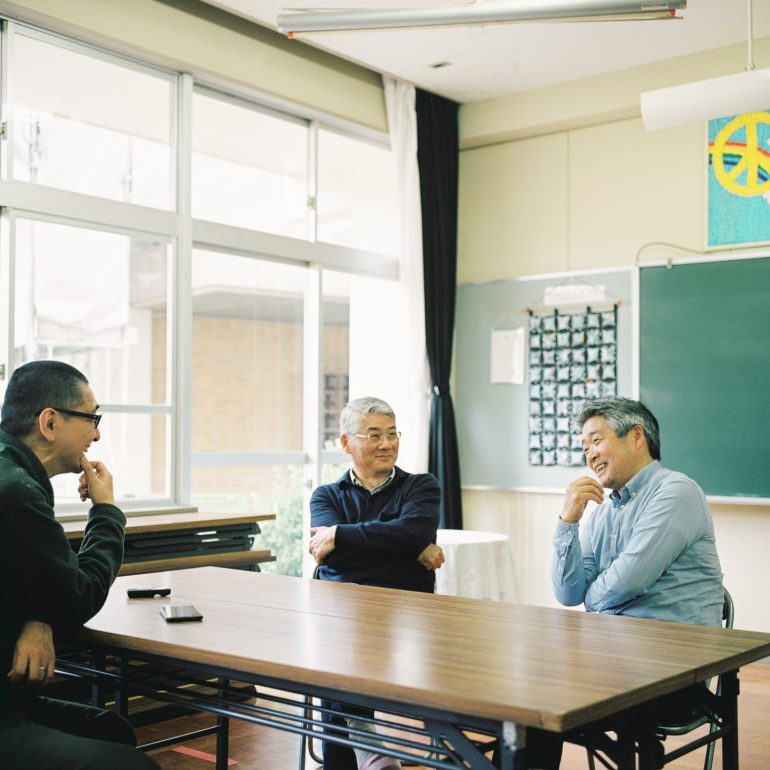
LINK
*1 Kamiyama Artist in Residence
*2 Kamiyama Juku (in japanese)
*3 Forum: A Gathering on Creative Depopulation and Lunch (in japanese)
Interviewed on May 6, 2019
A message from everyone at NPO Green Valley and Kamiyama Tsunagu Corporation:
We're thinking of our friends around the world as COVID-19 affects us all. Let's stay in touch online until we can safely meet again.
Text: Yoshiaki Nishimura, Photography: Masataka Namazu
English Translation: Claire Tanaka
Production cooperation: Mie Manabe, Keiko Kudo, Aya Fujimoto
Planning and production: Kamiyama Tsunagu Corporation

